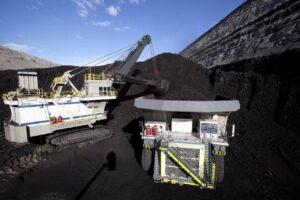The world’s largest “green” hydrogen production facility has commenced operation at a steel mill in Austria, where it will seek to demonstrate that fossil fuels can be replaced for industrial uses such as steel production.
The 6MW “CO2-neutral” hydrogen production facility is backed by 18 million ($A29 million) in funding from the European Union, and is intended to test whether CO2-neutral (“green”) hydrogen is suitable for use on an industrial scale.
The H2FUTURE project – partnering with Voestalpine Steel and Service Centre, where the facility is located, VERBUND, Siemens, Austrian Power Grid, K1-MET, and TNO – is looking to replace fossil fuels with green hydrogen as a means to power steel production over the long term.
“Green hydrogen produced through electrolysis, using electricity from renewable energy sources, can be used by industries like steel production, refineries, methanol or ammonia, making their products green,” said Bart Biebuyck, executive director of the Fuel Cell Hydrogen Joint Undertaking (FCH JU).
Voestalpine is currently investigating the practical application of using a hybrid technology to bridge between the company’s existing coke/coal-based blast furnace route and electric arc furnaces powered with green electricity partly generated using green hydrogen.
If the technology proves economically feasible, Voestalpine could reduce its CO2 emissions by around a third between 2030-35.
Over the long-term, however, Voestalpine is hoping to use green hydrogen to reduce its CO2 emissions by a total of over 80% by 2050.
“We have set ourselves a clear goal of greater direct avoidance of CO2 emissions in steel manufacturing over the coming years,” saidHerbert Eibensteiner, Chairman of the Management Board of Voestalpine AG.
“With the start of operations at the world’s largest hydrogen pilot plant at our site in Linz, we have succeeded in taking a significant step towards driving this technological transformation.”
The new green hydrogen production facility uses a Siemens Silyzer 300 proton exchange membrane (PEM) electrolysissystem which splits water into its constituent parts, hydrogen and oxygen and can generate 1,200 cubic metres of green hydrogen.
“Siemens has a history of focusing on clean energy, including its generation, distribution, and application,” said Wolfgang Hesoun, Chairman of the Management Board of Siemens AG Österreich. “Efficient technologies are a key element in curbing climate change with its dramatic consequences.
“We are delighted to see this new technology in use for the first time as part of this project,” Hesoun added. “This outstanding project is an important step towards global decarbonization.”











